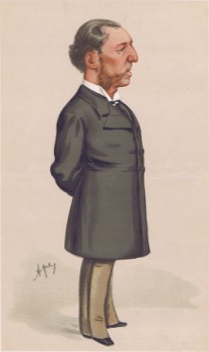Motherhood: Exploring Social Ideas in The Yellow Book
Mary Ann Matias
Ryerson University
Maternity and Family Values
|
In contrast, Greenwood's article, “Women – Wives or Mothers,” is an example of content in The Yellow Book that expressed normative views about motherhood in the 1890s. The stereotypes expressed in artwork were symptoms of an abstract significance for women in society, with their sexuality and fertility also giving cause to deny them any influence and individuality (Slatkin 13). A mother's identity resided in the home and a sort of “surveillance of motherhood” took place (Jagger and Wright 29). It was unsavory for women to have children outside of marriage, and these mothers were typically condemned as deviants in an accepted structure (Jagger and Wright 29). This social ideal of a traditional family based a lot of its responsibility on the women – their inability to fit this mantle was seen as a risk to both men and their children. Fatherhood, however, did not bear this same responsibility. Fathers were seen as possessing a “natural right” over their wives and children, as men possessed a superior strength and rationality to women (Jagger and Wright 29). Essentially, this responsibility towards maternity trapped women within domesticity, constructed from a dependency on their husbands or children. |
|
Greenwood claims the article is by “A Woman.” He is attempting to validate his opinions by drawing on family values through the voice of those he feels should adhere to them: a woman. On a basic level, female
sexuality and fertility manifests only two roles for women within the
family, and both cement this domestic environment. The first of these
roles is that of a wife. The institution of marriage needed to be
challenged and reconstructed to recognize the
rights of married women (Lydia Murdoch 75), but at the time it was
celebrated as necessary for women to maintain their respectability.
Greenwood takes full advantage of this, as he claims the bond between a
man and woman enables her to fulfill her true social
destiny and should instill an immense gratitude towards the male (13). A
man becomes the only way in which a woman is socially secure. The
second lifestyle option that Greenwood offers in this article is
motherhood, and it is treated as something of
a transaction. Children are a gift bestowed upon a female (Greenwood
13), and they are expected to be received as such. While the mother
becomes simultaneously grateful and dedicated to her husband for
providing this, he is encouraged to “make the best of a very good bargain” (Greenwood 14).
|

|
These themes are creating this dependency on the male, molding him into a vital figure for females in the social sphere – only he allows for the fulfillment of the traditional ideology, as a father to her children and as her husband. The element of maternity allows Greenwood to portray these two roles as unavoidable, as it is a natural force governing the two roles that allows her to eventually embody both (Greenwood 12). The only responsibility Greenwood gives the the male is that he is there as a vital part of a woman's life in order to achieve these two roles. This fits the traditional approach to fatherhood as a foundation of power (Murdoch 80). The mother's dependency on her children and husband was born from the expectation of maternal affection, as she was to lay a familial foundation. Greenwood portrays women as inherently possessing an overabundance of maternal instinct, so much so that she naturally knows “which fold she was intended to pass” (Greenwood 14). It is in her nature to be a loving creature, so dependent on loving something that even a childless marriage can be useful to her husband. The “unemployed maternal instincts of the wife easily work themselves out in an unlimited and universal auntdom” (Greenwood 14), and so she will always possess the ability to embody this domestic world. In essence, no alternative is offered to women, and describing it as an act of nature suggests that these two roles are inescapable. As a result, Greenwood uses sexuality and fertility to create the ultimate female identity.
|



